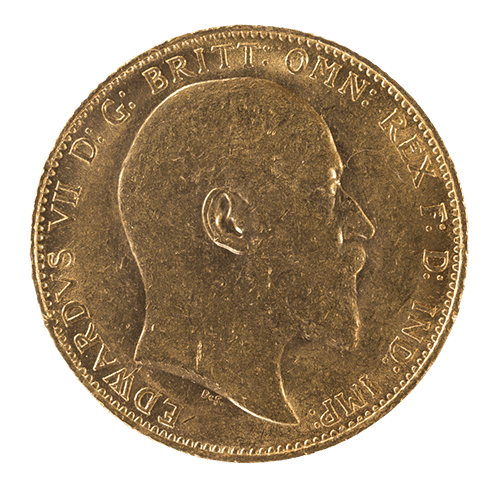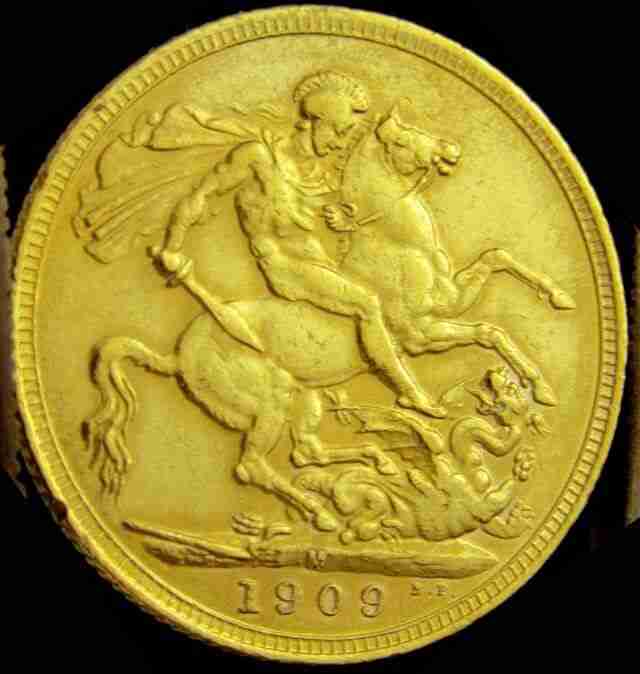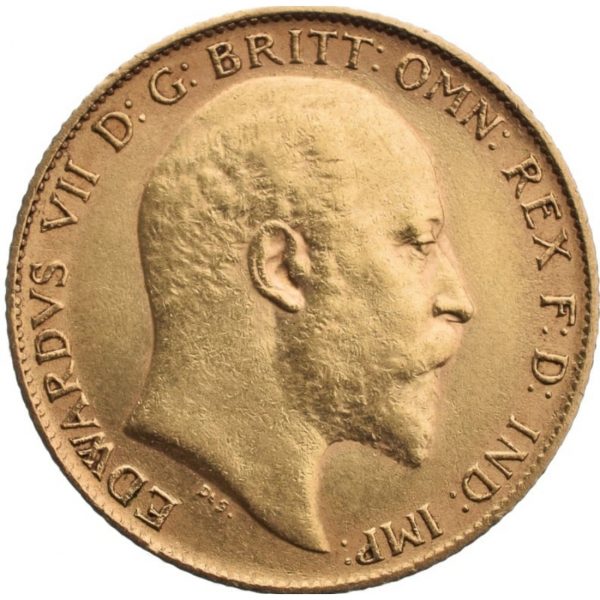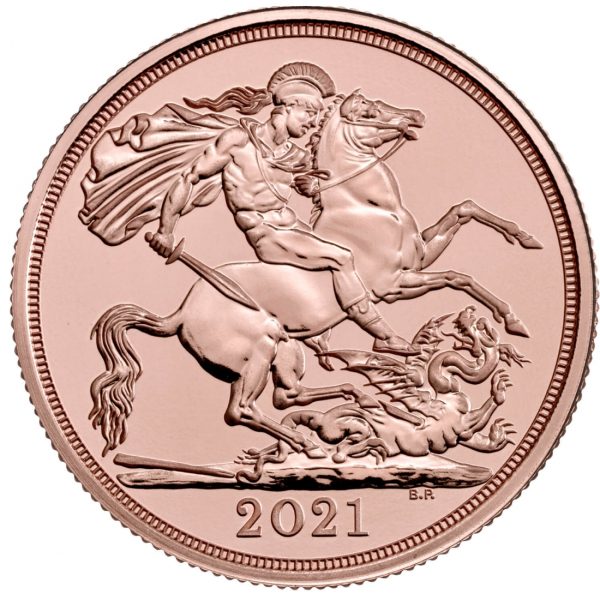King Edward VII Sovereign – All You Need to Know
03/10/2017Daniel Fisher
Free & fully insured UK Delivery. Learn more
Secure & flexible payments. Learn more

Buyback Guarantee Learn more
British Sovereigns have existed since ancient times, but the modern-day Sovereign has been minted since the Great Recoinage of 1816. Sovereigns have been produced for each Monarch since this time with King Edward VII being no exception. In this article, we provide various facts and insights about King Edward VII sovereigns.

As with many sovereigns, the value of an Edward VII sovereign varies from day to day and from coin to coin. Some of the coins have a numismatic value alongside the value of their pure gold content, which causes further fluctuation in the prices.
Generally speaking, Edward Sovereigns are valued at a similar price to George V Sovereigns, slightly more expensive than Elizabeth II coins but cheaper than the older Victoria Sovereigns.
There are multiple ways you can find the cost to buy one right now, including checking out our King Edward VII Sovereign prices. We offer quantity discounts if you’re considering buying more than one coin.
If you’re looking to sell an Edward VII Sovereign, you can see how much your gold sovereign is worth today by clicking below.
King Edward VII was king of the UK and British Dominions from 22nd January 1901 until 6th May 1910. Therefore, King Edward VII Sovereigns were minted at this time with coins being available with dates from 1902 (when King Edward was crowned) until his death in 1910.
Due to his short reign, Edward VII coins are in short supply.
In total there were 221,532,955 sovereigns minted through Edward VII’s reign, with 190,295,638 of them being full sovereigns and 31,237,317 being half sovereigns.
The following were the production quantities of King Edward VII gold sovereigns for each year:
Edward VII’s reign came at the heart of Britain’s growing Empire and coin mintage reflected this, with production in several far flung territories. There are five possible mint locations for King Edward VII sovereigns, these are listed below with the quantities minted (around 200 million in total):
The rarest Edward VII sovereign would be the ones minted in Canada in 1910, with only 28,020 minted.
The most common Edward VII sovereign would be the one minted in London in 1910, with 22,379,624 minted, which was by far the highest mint of the reign.

The coin portrait was designed by George William de Saulles, a British medallist. He was the chief engraver at the Royal Mint from 1892 until his death in 1903.
The rear of the coin features the classic fable of St.George slaying a dragon, as created by Benedetto Pistrucci.
Unlike during the reign of Queen Victoria and Queen Elizabeth, no Edward VII Sovereign has featured a Shield Back reverse design, usually reserved to commemorate a jubilee year.
This sovereign features the following design on the obverse/reverse:
Until the first world war sovereigns were used as £1 coins. The majority of the population could not afford to keep them as collectables, so many sovereigns became worn through active use.
Therefore, to this day the quality of sovereigns is extremely variable with matte proof and extra fine examples commanding a significant price premium. Edward VII Sovereigns can generally look more worn than other monarch versions due to this use as currency.
Despite today’s Sovereign coins being officially classed as legal tender, they cannot be used to pay for goods and services as they’re no longer in circulation.
The gold amount within a King Edward VII sovereign weighs about 0.2354 troy oz. (i.e. just less than a quarter of an oz. When calculating as an investment it’s easy to see that a premium is paid for these Sovereigns over the market price for gold. This is the balance between the current gold price, production cost, dealer margin and its numismatic value. When buying coins like this it’s important to remember for your investment you are not only becoming a gold owner, but also will benefit from the future collectors’ demand for these Sovereigns.
Edward Gold Sovereigns are a popular investment choice for a number of reasons.
If in doubt just give us a call and we can advise on the best investment approach for your circumstances.
Our Portfolio Creator tool will suggest 4 options based on your budget and objectives. Give it a try below.
If you are looking to buy this famous and highly collectable sovereign, then why not contact us here at Physical Gold on 020 7060 9992? We, of course, stock this Sovereign, but what we hold does fluctuate, socontact us for our latest holdings and price. If you need a specific year or level of quality, please let us know.
Image Credit:James Shepherd


Live Gold Spot Price in Sterling. Gold is one of the densest of all metals. It is a good conductor of heat and electricity. It is also soft and the most malleable and ductile of the elements; an ounce (31.1 grams; gold is weighed in troy ounces) can be beaten out to 187 square feet (about 17 square metres) in extremely thin sheets called gold leaf.
Live Silver Spot Price in Sterling. Silver (Ag), chemical element, a white lustrous metal valued for its decorative beauty and electrical conductivity. Silver is located in Group 11 (Ib) and Period 5 of the periodic table, between copper (Period 4) and gold (Period 6), and its physical and chemical properties are intermediate between those two metals.